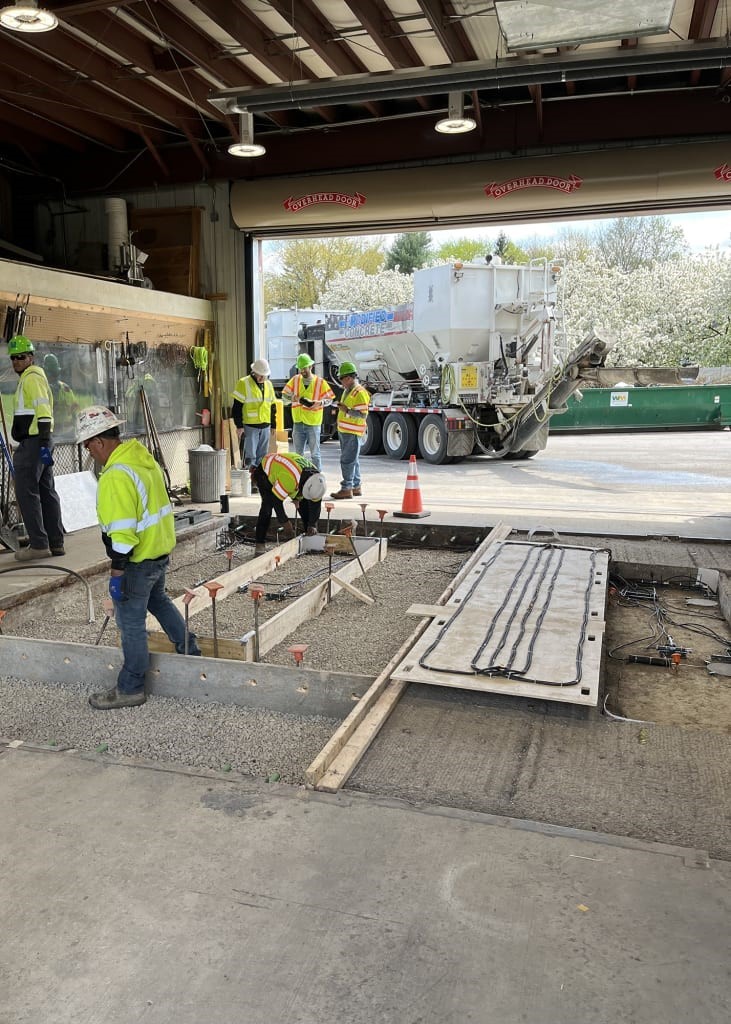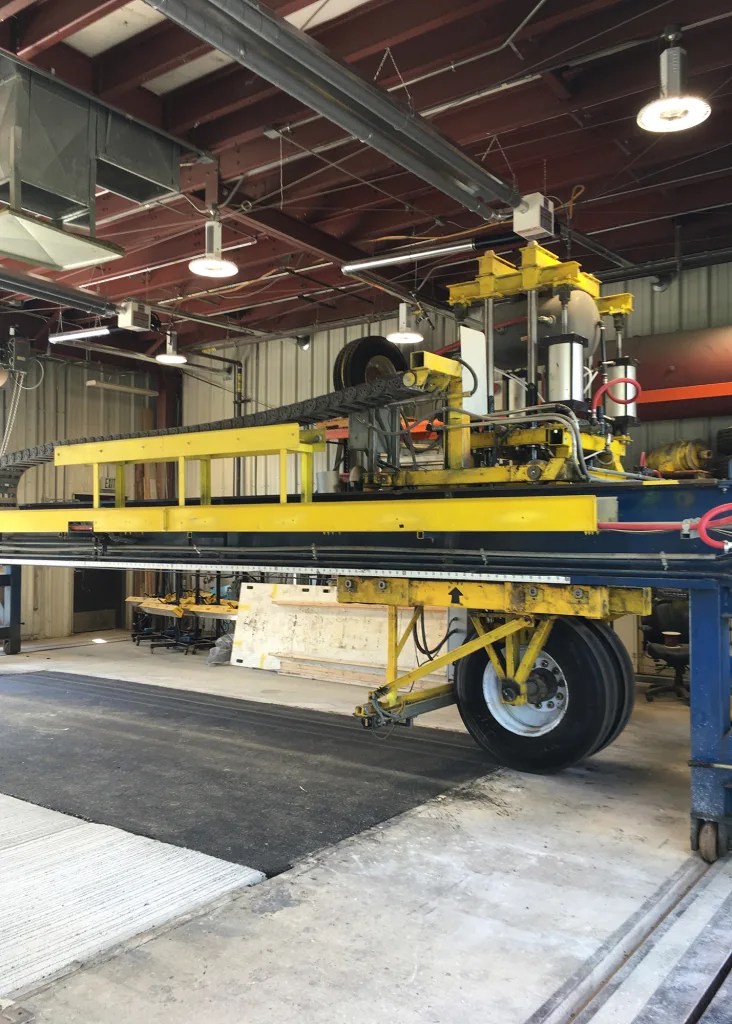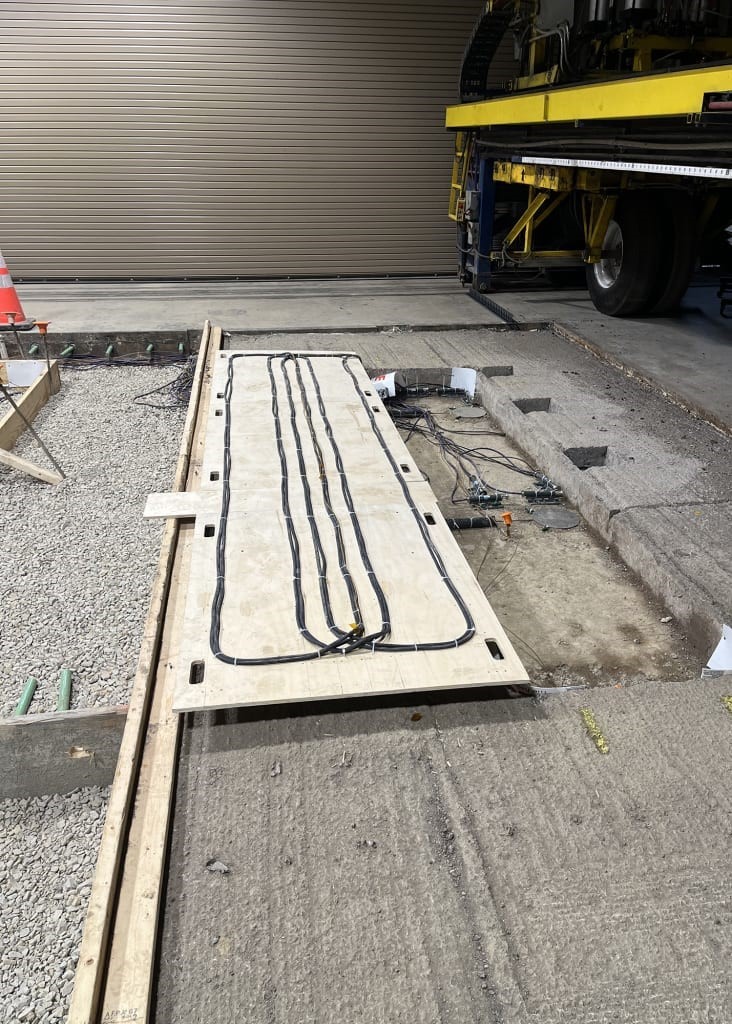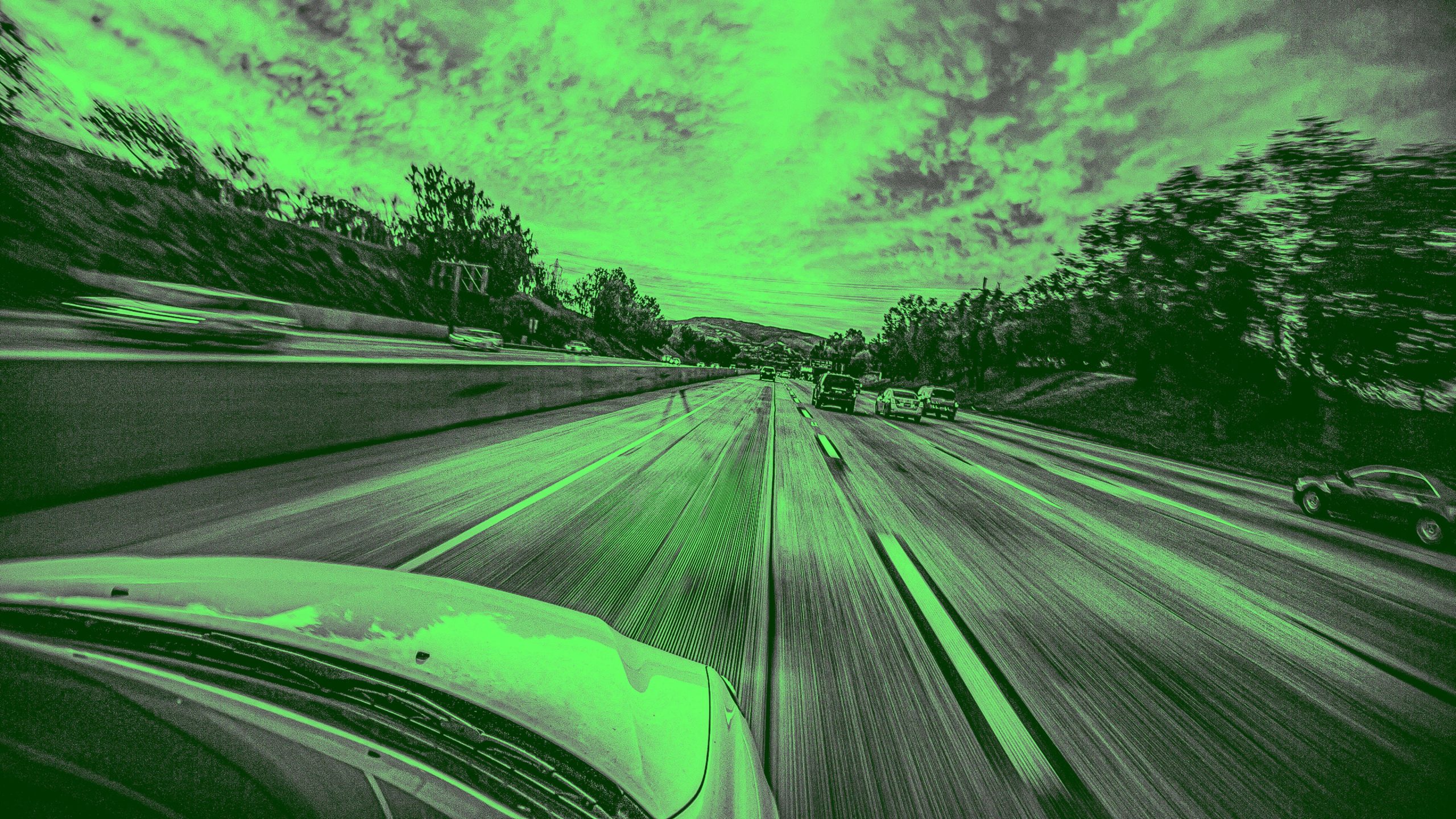This Indiana highway can wirelessly charge electric cars and trucks as they drive
This Indiana highway can wirelessly charge electric cars and trucks as they drive
Right now, charging an EV often means searching for a charger and plugging in for hours. But you might eventually be able to do it on the road.
BY Adele Peters3 minute read
A short stretch of a highway under construction in West Lafayette, Indiana, is designed to test technology that can charge electric vehicles—including semis—as they drive at 65 miles an hour.
The basic technology is like wireless charging for your cell phone, where a transmitter sends energy through a magnetic field. “Here, it’s very similar, except the power levels are much, much greater,” says Steve Pekarek, an electrical and computer engineering professor at Purdue University, where a team is working with the Indiana Department of Transportation on the project.

A coil embedded under asphalt or concrete transfers energy from the grid to a receiver on a vehicle. As an electric vehicle drives, the system can track how much electricity it used to charge it. If the technology is permanently installed, drivers would pay for the exact amount of power they use.
Others have installed similar tech in roads, including a street near downtown Detroit. But the new pilot is the first built on a highway. It’s also the first to work both with electric cars and much larger electric trucks.

How a wirelessly-charging road can help
If electric vehicles could charge as they drive, it could help solve some of the bigger challenges for adoption. Right now, EV manufacturers use huge batteries because drivers worry about how far they can travel on a single charge. That means that when you plug in the vehicle, it takes longer to charge. Since batteries are the most expensive part of an EV, it also adds to cost. Bigger batteries also add to the environmental impact of making an EV and mean that they’re more dangerous in crashes.
And for massive 18-wheeler trucks making long-distance deliveries across the country, batteries aren’t yet really viable. While electric trucks are already making shorter deliveries—for example, from the Port of LA to nearby warehouses—long charging times make it more impractical to make longer trips. Some startups are working on alternatives, including swapping batteries so drivers don’t have to wait hours to charge. Roads that can wirelessly charge could be another solution, and help significantly reduce the cost of EVs.
Purdue researchers worked to develop patent-pending technology that could work with different types of vehicles. The system detects how much power is needed. “There has to be a ‘handshake’ between the vehicle and the road,” says Pekarek. “In essence, the vehicle tells the roadway, ‘I’m here,’ and then it also says, ‘This is the power I want.’”

The pilot will prove whether the tech can scale up
The team has already tested the durability of the technology, using equipment that simulates the weight of heavy trucks passing over a road. It also tested the energy transfer in a lab. Construction crews are now beginning to install the tech in a quarter-mile-long stretch of highway.
After installation is complete, the new pilot is expected to begin in May 2025 and last through the summer. Cummins, the truck manufacturer, will provide an electric truck that will test how the tech performs. Since vehicles need an attachment for the energy transfer to work, someone who happens to drive down the road in a typical EV won’t get a charge. Future cars will have to be designed or retrofitted with the attachment to use the technology.
The researchers plan to study how the road performs over time. That includes what happens if there’s a crack, for example, and how long the pavement will last. (Because the coils are embedded two inches below the surface, the state could later repave the road without damaging the equipment.) They’ll study what happens if a vehicle doesn’t drive directly over the transmitter. The pilot will also look at what happens in bad weather, and the researchers will learn more about efficiency and the cost of running the system. If things go well, the next step would be to install several miles of a wireless highway within the next few years. “Then I think what you’d see is a rolling out of significant freight corridors,” says Pekarek.
(18)



